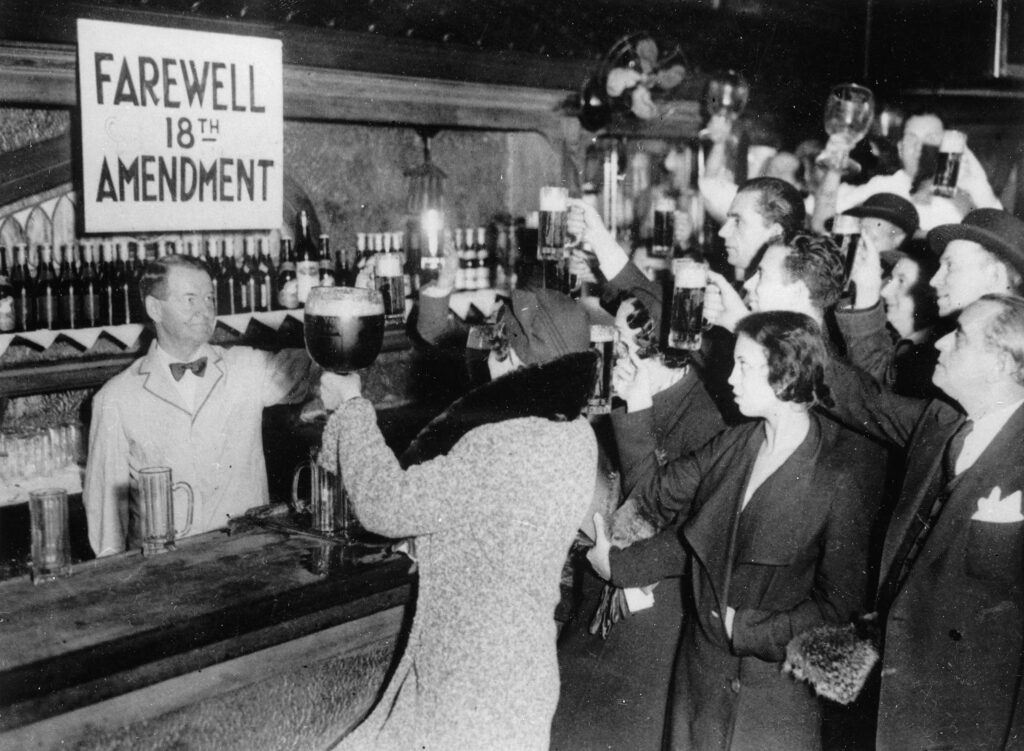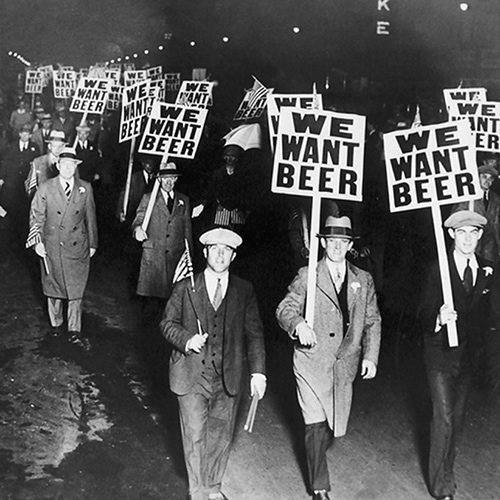Prohibition refers to the period in United States history when the production, sale, and consumption of alcoholic beverages was outlawed. This was done through the ratification of the 18th amendment on January 16, 1919 and went into affect on January 17, 1920 (History.com Editors).
Women were among the most common supporters of this movement, along with bosses. Men that are drunk aren’t exactly great husbands or employees. Woodrow Wilson was the President at the time, and he was at the end of his second term.
Prohibition turned out to be harder to enforce than originally thought. The responsibly was first given to the Internal Revenue Service, which was entirely too underfunded and understaffed for the job. This led to somewhat of an ‘all-hands-on-deck’ situation and the Department of Justice taking over.

The absence of enforcement led to a rise in crime, and a crime of a whole new kind. Bootlegging and speakeasies were invented. Speakeasies were illegal bars, and bootlegging is what supplied them. It was criminally easy, so easy that people started to make a business out of it. You might know these people as Bonnie and Clyde, Al Capone, or John Dillinger. It was the start of organized crime and the gangster.
This relates to Gatsby directly. Not only was it something that happened during his time, but bootlegging was how Gatsby became Gatsby, it was his job. It’s how he knows Meyer Wolfsheim. It’s what Tom uses against him.

The end of prohibition came with the Great Depression. The government (as well as its citizens) was broke, and alcohol was taxable. FDR decided that everyone was drinking anyways, you might as well try to get some money for federal programs while we were at it.
Works Cited
Editors, History.com. “Prohibition.” History, A&E Television Networks, 21 Aug. 2018, www.history.com/topics/roaring-twenties/prohibition.
Fitzgerald, F. Scott. The Great Gatsby. Harmondsworth, Penguin Books, 10 Apr. 1925.
